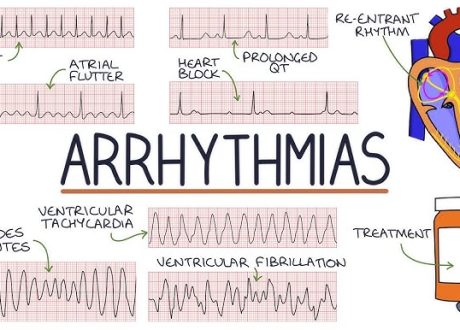Patients with abdominal pain are common in the ED, but you need a strategy for quickly identifying patients who are at high risk for life-threatening causes of pain, and you need to order testing and consultation that improves the accuracy of your clinical assessment.
What are the 4 groups of patients with abdominal pain who are frequently misdiagnosed?
Why do elderly patients with appendicitis often have little or no abdominal pain?
In women of childbearing age, is there a realistic algorithm to distinguish gastroenteritis from appendicitis, ectopic pregnancy, and PID?
What role should prior abdominal surgeries have in assessing abdominal pain?
What are the 18 high-yield historical questions to ask patients who present with abdominal pain?
Fever, high WBC, low blood pressure, tachycardia: how reliable are these in pointing to a cause for abdominal pain?
Pain location, migration, tenderness, and guarding: what each one can (and can’t) tell you about what is going on.
When pelvic and testicular exams are must-dos.
What are the highest-yield lab tests? CBC? Lipase or amylase? CRP?
When x-ray is all you need, and when CT is a must.
Will opioids make diagnosis more difficult?
- Abstract
- Case Presentations
- Introduction
- Critical Appraisal of the Literature
- Epidemiology
- Pathophysiology
- Differential Diagnosis
- The Elderly
- Patients With Human Immunodeficiency Virus
- Women of Childbearing Age
- Patients With Prior Abdominal Surgery
- Emergency Department Evaluation
- History
- Physical Examination
- Vital Signs
- Temperature
- Respiratory Rate
- Blood Pressure
- Heart Rate
- Abdominal Examination
- Palpation
- Location of Tenderness
- Guarding
- Peritoneal Signs
- Signs: Murphy, Psoas, Obturator, Rovsing
- Auscultation
- Pelvic Examination
- Rectal Examination
- Testicular Examination
- Serial Examinations
- Vital Signs
- Diagnostic Studies
- Laboratory Testing
- Complete Blood Cell Count
- C-Reactive Protein
- Lipase and Amylase
- Lactate
- Urinalysis
- Imaging Studies
- Plain Films
- Views
- Ultrasound
- Computed Tomography
- Magnetic Resonance Imaging
- Electrocardiogram
- Laboratory Testing
- Treatment
- Analgesia for Acute Abdominal Pain
- Controversies and Cutting Edge
- Clinical Decision Rules
- Clinical Policies
- Disposition
- Observation Units
- Summary
- Risk Management Pitfalls in Evaluating Patients With Abdominal Pain
- Time- and Cost-Effective Strategies
- Case Conclusions
- Clinical Pathways
- Clinical Pathway for Patients Aged < 50 Years With Abdominal Pain
- Clinical Pathway for Patients Aged > 50 Years With Abdominal Pain
- Clinical Pathway for Women of Childbearing Potential With Lower Abdominal Pain
- Tables, Figures and Appendix
- Table 1. Abdominal Pain: Dangerous Mimics
- Table 2. Important Extra-Abdominal Causes of Abdominal Pain
- Table 3. Disease Spectrum in Acute Abdominal Pain, by Age
- Table 4. High-Yield Historical Questions in Abdominal Pain
- Table 5. Indications for Abdominal Plain Films for Abdominal Pain
- Table 6. Alvarado Score
- Figure 1. Sample Patient Chart for the Patient With Abdominal Pain
- Figure 2. Sample Discharge Instructions for the Patient With Abdominal Pain
- Appendix 1. Pros and Cons of Diagnostic Tools for Abdominal Pain in Various Disease Entities
- References
Abstract
The management of abdominal pain has changed significantly in the past 20 years, with increasing emphasis on identifying patients who are at high risk for occult pathology and worse outcomes. Emphasizing safe disposition over diagnosis, this issue identifies the important aspects of the history and physical examination, explores strengths and weaknesses of laboratory evaluations, and summarizes the pros and cons of the many types of imaging now available. With abdominal pain still the most common chief complaint seen in the emergency department, a new look at the evolution of assessment strategies is in order, such as new recommendations on the use of oral contrast, managing HIV patients on highly active antiretroviral therapy, maximizing use of bedside ultrasound, when and how to offer pain relief, and the value of serial examinations and observation to reduce costs and improve care.
Case Presentations
As you begin your shift, a 68-year-old woman presents with severe abdominal pain. She requires 4 mg of morphine before you can even talk to her. Surprisingly, her abdomen is soft, and not particularly tender. She is tachycardic to the 120s, and her pulse feels irregular. Her blood pressure is 100/50 mm Hg. It seems strange that her pain is so incongruent with her exam, and you wonder: What is the best imaging study to help clarify things?
In the next room, a 24-year-old man with no past medical history has presented with sudden, severe left lower quadrant pain followed by vomiting. He has normal vital signs except for tachycardia and a nontender abdomen. He seems too young to have diverticulitis, and since the pain is on the left side, you doubt appendicitis. A urinalysis is negative for blood, making renal colic less likely. Pain medication helps, and you wonder whether this is just gas or further diagnostic testing is needed…
Introduction
An experienced emergency clinician might compare the painful abdomen to the dark side of the moon—a terrain both indistinct and enigmatic. The patient’s history is frequently uncertain and the physical examination misleading. To further complicate the issue, “textbook” presentations of serious disease seem to exist only in print. After an extensive workup, patients with severe pain may prove to have gastroenteritis, while those with a seemingly benign belly are hiding a surgical catastrophe.
This 20th anniversary issue of Emergency Medicine Practice will once again address the dilemma of abdominal pain and take another look at the structured approach to this complaint. The central principles include: (1) recognizing the high-risk patient, (2) selecting appropriate testing, and (3) using flexible clinical pathways. This issue emphasizes disposition over diagnosis, as it is not as important to identify an exact cause of abdominal pain as it is to recognize a surgical abdomen.
Critical Appraisal of the Literature
The broad scope of abdominal pain makes it less amenable to the large randomized double-blind studies seen with sepsis, stroke, or pulmonary embolism. Much of the emergency medicine literature focuses on incidence, causes, and misdiagnosis of abdominal pain. Some researchers concentrate on radiation-reduction strategies or clinical scoring systems to detect a particular cause of abdominal pain (such as appendicitis). The American College of Emergency Physicians Clinical Policy on acute abdominal pain has been “retired,” being last updated almost 20 years ago. For this update, except for the most common and deadly conditions, articles were chosen based more on clinical presentation and emergency evaluation of abdominal pain rather than on specific etiologies of abdominal pain.
Risk Management Pitfalls in Evaluating Patients With Abdominal Pain
1. “I didn’t think she needed a CT.”
The CT scan is the most revealing tool in the ED workup. Maintain a low threshold for obtaining CT in acute abdominal pain in the elderly.
7. “I thought it was just gastroenteritis.”
It is preferable to give a diagnosis of “nonspecific abdominal pain,” “undifferentiated abdominal pain,” or “abdominal pain of unknown etiology” than to assign a specific but unsupported diagnosis. A true diagnosis of gastroenteritis requires nausea, vomiting, and diarrhea.
9. “The pain was in the wrong spot!”
Consider the diagnosis of appendicitis in patients with right flank and right upper quadrant pain (and also left lower and, rarely, left upper quadrant pain). Patients with retrocecal appendicitis present with minimal or no right lower quadrant tenderness.
Tables, Figures and Appendix











